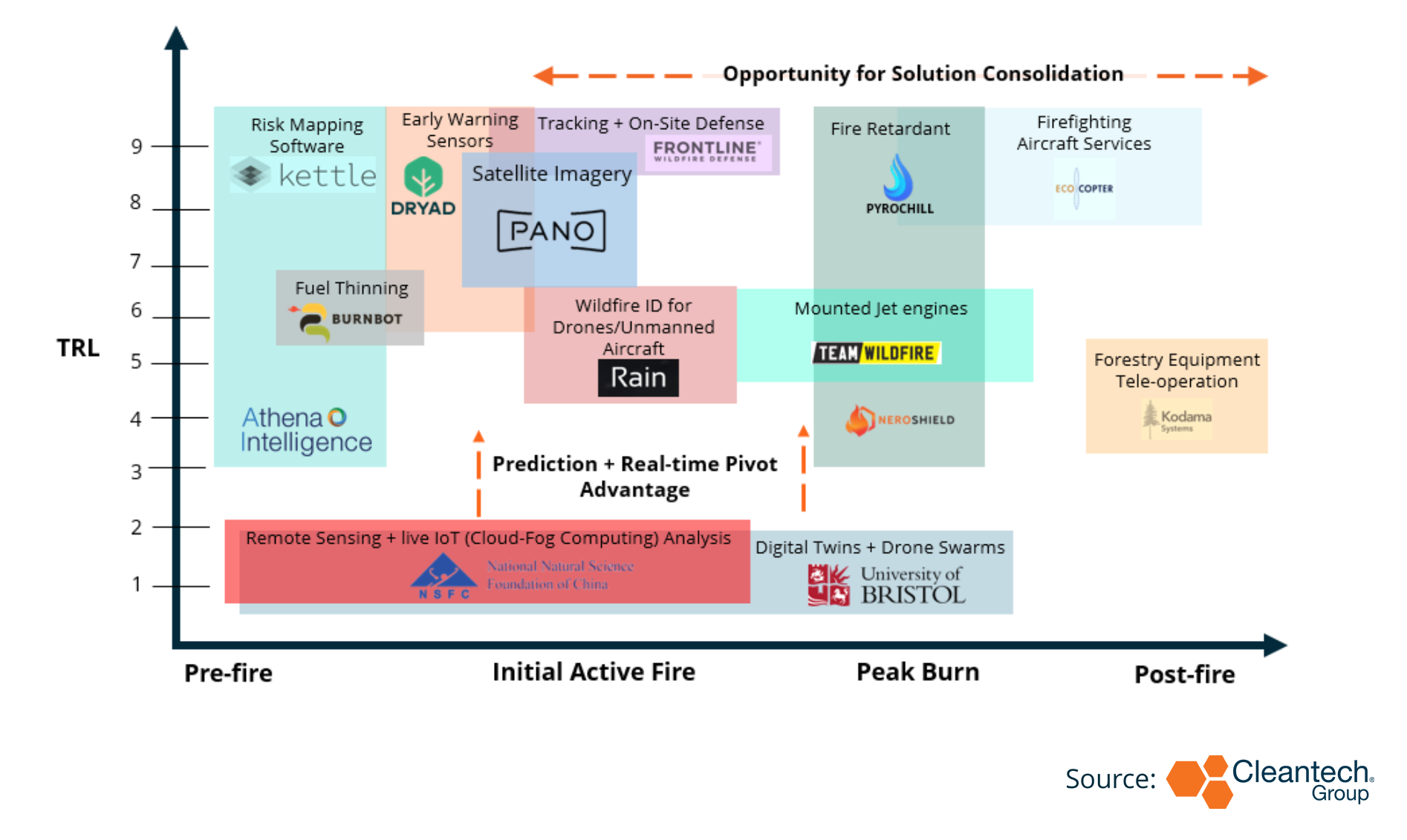In the realm of wildfire management, the landscape is undergoing a profound transformation thanks to the increasing maturity and decreasing costs of artificial intelligence (AI) and machine learning technologies. These advancements are shifting the ways in which we detect, monitor, and respond to wildfires, offering a beacon of hope in the face of escalating wildfire threats worldwide.
One of the most notable developments in this arena is the deployment of solar-powered sensors connected to Internet of Things (IoT) mesh networks. Companies like Dryad have been instrumental in placing these sensors deep within forests, providing real-time data on environmental conditions crucial for ultra-early wildfire detection. Alongside sensor networks, innovations in drone technology, exemplified by companies like Squishy Robotics, offer aerial monitoring capabilities that can swiftly identify and track wildfire outbreaks.
Complementing these advancements are remote-operated fuel-thinning machines, such as those developed by Burnbot, which help reduce the fuel load in fire-prone areas, thereby mitigating the intensity of potential wildfires. Moreover, the integration of autonomous and manual aircraft equipped with wildfire intelligence, pioneered by Rain, enables rapid response and suppression of wildfire ignitions, crucial for containing fires before they escalate out of control.
Limits of Current Wildfire Prevention
However, for these technologies to achieve maximum efficacy, a synergistic approach is imperative. By combining sensor networks, drone surveillance, and aerial firefighting capabilities, land managers can create a robust toolkit for both wildfire prevention and ecosystem management.
Unfortunately, government funding has traditionally skewed towards firefighting rather than proactive detection and prevention measures. This disparity in funding has hindered the widespread deployment of preventative innovations, limiting access to capital for companies at the forefront of wildfire technology development.
One of the most trusted preventative measures remains prescribed fires, which has been a technique used by humans for thousands of years. To this day, controlled burns offer a cost-effective solution compared to mechanical alternatives like bulldozers. Despite their efficacy, prescribed fires are constrained by limited financial resources and personnel, underscoring the urgent need for technology-driven prevention solutions.
While cameras are widely deployed for wildfire surveillance, they come with significant drawbacks, including high initial costs and potential blind spots. Similarly, existing satellite systems face limitations such as blackout periods during peak burn hours and false alarms due to sun glint, highlighting the need for more sophisticated monitoring solutions.
The economic toll of wildfires in the U.S. alone is staggering, ranging from $394B to $893B annually, equivalent to 2-4% of the GDP. Reducing response times by just 15 minutes could lead to a significant decrease in the frequency of large, uncontained fires, highlighting the importance of investing in advanced detection and suppression technologies.
AI is Key to Growth in Wildfire Management Innovation
Remote sensing coupled with AI algorithms are poised to revolutionize wildfire monitoring capabilities. Companies like Pano are leveraging real-time satellite and aerial imagery to detect and analyze wildfire activity, enabling timelier and more informed decision-making. Additionally, risk modeling software, used by parametric insurance enterprises like Kettle, provides valuable intelligence for informed underwriting decisions, helping them assess and mitigate wildfire-related risks more precisely.
In the firefighting sphere, innovations continue to emerge, including first-of-its-kind mounted jet engines capable of combating wildfires with micro-hurricanes pioneered by Team Wildfire. Similarly, advancements in fire retardant formulations without water and harmful chemicals, such as those developed by Pyrochill and NeroShield, offer environmentally sustainable alternatives to traditional firefighting methods.
Wildfire Risk & Resilience Innovation: Challenge Areas & Maturity

Moreover, the integration of AI into drone technology holds immense promise for enhancing monitoring and response capabilities. Academic institutions like the University of Bristol are spearheading efforts to develop AI-powered drones capable of adapting and pivoting strategies in real-time during firefighting operations. Further down the pipeline, technology that can reduce response times down to two minutes could significantly disrupt the market.
Addressing the full wildfire lifecycle requires a multifaceted approach, encompassing prevention, detection, and suppression measures. As such, there is a growing need for solutions that cover multiple aspects of wildfire management, reflecting the fragmented nature of the wildfire management market.
Despite the challenges, the wildfire management market is experiencing small but steady growth, expected to reach $3.6B by 2028 at a compound annual growth rate (CAGR) of 6.9%. This growth is driven by increased investments in wildfire prevention and management initiatives, alongside government mandates for wildfire insurance coverage in high-risk areas. However, it cannot be understated that this level of government budgeting is not nearly enough despite increasing acknowledgement of the risk.
The convergence of AI, machine learning, and sensor technologies has the potential to revolutionize wildfire management if fully deployed in a stacked manner, offering a glimmer of hope in the fight against escalating wildfire threats. As the market evolves and the technologies mature, a major opportunity exists for whoever can consolidate solutions to address multiple challenges concurrently.
- SEO Powered Content & PR Distribution. Get Amplified Today.
- PlatoData.Network Vertical Generative Ai. Empower Yourself. Access Here.
- PlatoAiStream. Web3 Intelligence. Knowledge Amplified. Access Here.
- PlatoESG. Carbon, CleanTech, Energy, Environment, Solar, Waste Management. Access Here.
- PlatoHealth. Biotech and Clinical Trials Intelligence. Access Here.
- Source: https://www.cleantech.com/outsmarting-wildfires-with-artificial-intelligence/



